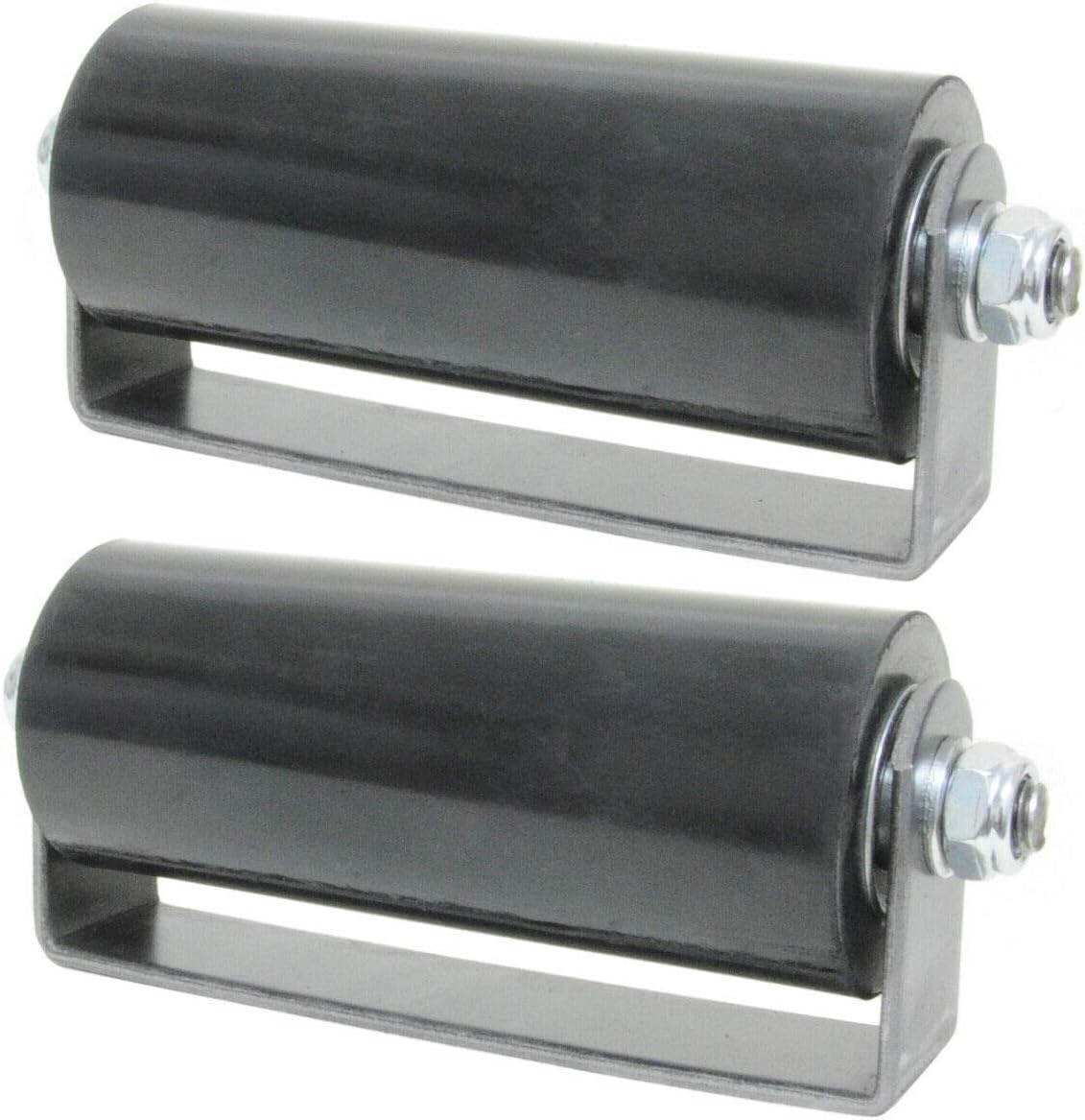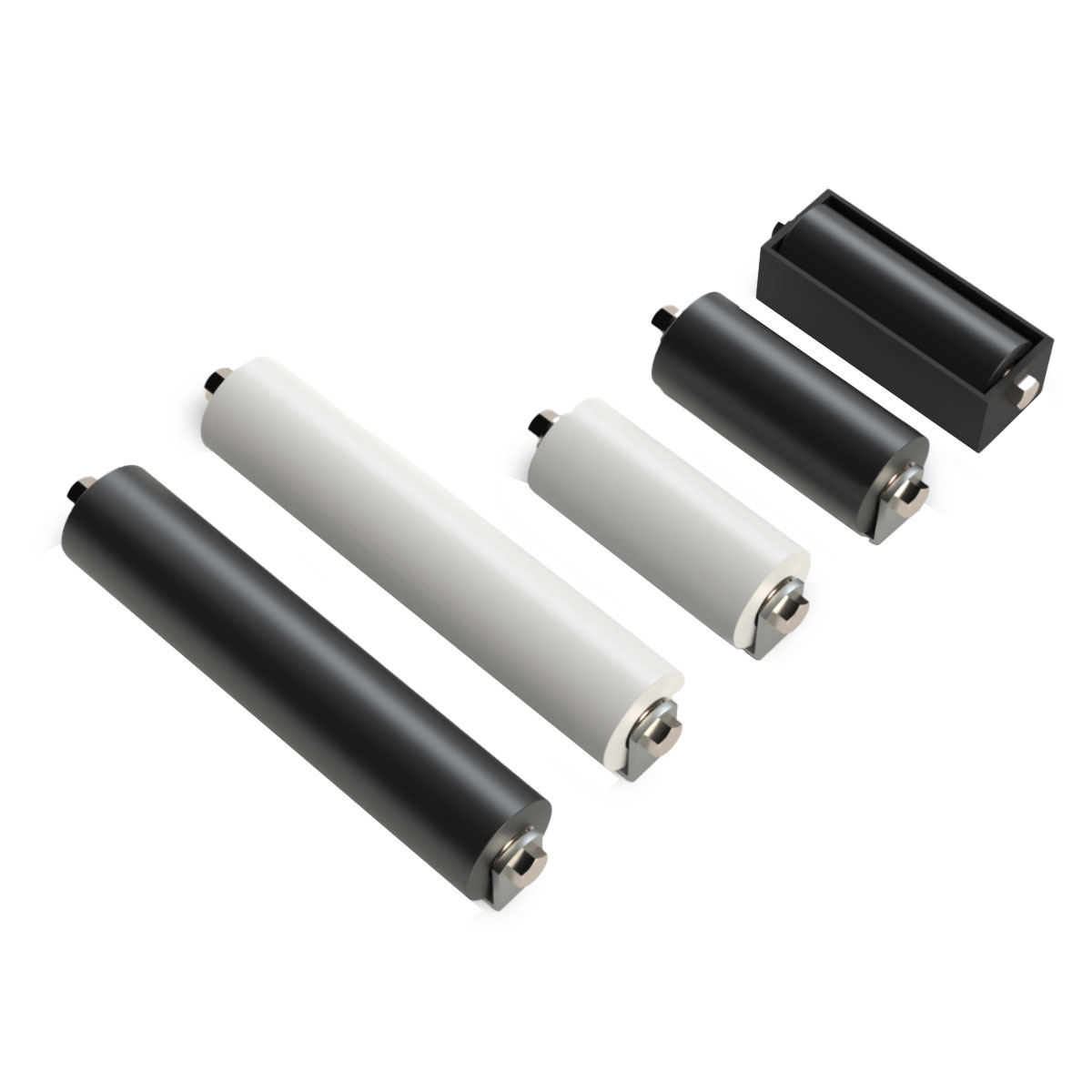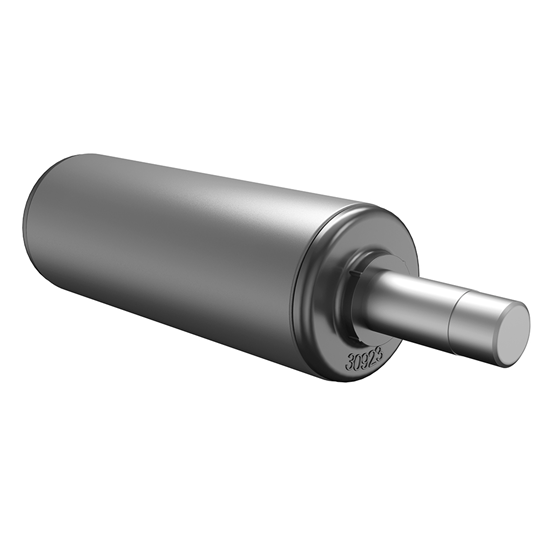Product Description
| Description | CEMA, DIN, JIS, AS, SABS, ISO Standard Design & JXIHU (WEST LAKE) DIS. ODM |
| Pipe | 1) Material : Q235 carbon steel equal to DIN S235JR 2) Roller Diameter : φ63.5mm ~ φ219mm / 2 1/2 inch ~ 8 5/8 inch 3) Roller Length: 150mm ~ 3000 mm 4) Thickness : 3.0 ~6.0 mm |
| Shaft | 1) Material : 45# steel equal to DIN C45 2) Cold-drawn bright round steel 3) Shaft Diameter: 20mm, 25mm, 30mm, 40mm, 45mm, 50mm |
| Bearing | 1) Single Row Deep Groove Ball Bearing 2RS&ZZ with C3 clearance 2) Brand: SKF,FAG,NSK,HRB, LYC, CHINAMFG or according to your requirement |
| Bearing Housing | 1) Material : Q235 carbon steel equal to DIN S235JR 2) Cold press working fit ISO M7 accuracy 3) Material thickness: 2.5mm ~ 5.0mm |
| Seals | 1) Labyrinth seal, nylon 6 material 2) JXIHU (WEST LAKE) DIS.’s patented product |
| Grease | 2# Lithium grease lubricant |
| Painting | 1) Ordinary painting, hot galvanized painting, Powder painting 2) Color: Black, red, yellow, blue or according to your requirement |
| Qustions | Answer |
| Plant Size | 65,000 Square Meters |
| Sample Policy | sample is available for free.But we don't bear the Express cost. |
| MOQ | 10 sets for idlers;1 pcs for pulley |
| Customization | Accept Customization |
| Delivery Time | 15-20days after receiving the deposit |
| Payment Term | 30% T/T in advance, then 70%T/T before shipment. |
/* January 22, 2571 19:08:37 */!function(){function s(e,r){var a,o={};try{e&&e.split(“,”).forEach(function(e,t){e&&(a=e.match(/(.*?):(.*)$/))&&1
| Material: | Carbon Steel |
|---|---|
| Surface Treatment: | Baking Paint |
| Export Market: | Global |
| Application: | Bulk Material |
| Color: | Customized |
| Transport Package: | Wooden Packages |
| Samples: |
US$ 1/Piece
1 Piece(Min.Order) | |
|---|
| Customization: |
Available
|
|
|---|

Can you explain the impact of guide rollers on the overall efficiency of material handling systems?
Guide rollers play a significant role in the overall efficiency of material handling systems. Here’s a detailed explanation of their impact:
- Precise Material Movement:
Guide rollers are designed to guide and support the movement of materials along a desired path. By providing a stable and controlled surface for material conveyance, guide rollers ensure precise movement and positioning. This precision minimizes the risk of material deviation, misalignment, or collisions, allowing for smooth and efficient material flow within the system. Accurate material movement enables efficient processing, reduces downtime, and enhances overall productivity.
- Reduced Friction and Energy Consumption:
Well-designed guide rollers with low-friction surfaces can significantly reduce the amount of energy required for material handling. By minimizing friction between the guide rollers and the conveyed materials, less power is needed to move the materials along the desired path. This reduction in energy consumption leads to improved energy efficiency and lower operational costs. Additionally, reduced friction helps extend the service life of the guide rollers by minimizing wear and heat generation.
- Enhanced System Throughput:
Efficient guide rollers contribute to increased system throughput in material handling operations. By facilitating smooth and consistent material flow, guide rollers help eliminate bottlenecks and optimize the overall speed and capacity of the system. When materials can be conveyed quickly and reliably, the system can handle higher volumes of materials, leading to improved productivity and throughput. Guide rollers also enable efficient sorting, merging, or diverting of materials, further enhancing system throughput and flexibility.
- Improved Product Quality:
The use of guide rollers in material handling systems helps maintain product quality and integrity. By guiding materials along a predetermined path, guide rollers prevent material damage, deformation, or contamination that can occur due to uncontrolled movement or collisions. This results in better product quality and reduces the risk of rework or product rejection. Guide rollers also ensure consistent material positioning, which is crucial for precision operations such as assembly, packaging, or quality control.
- Minimized Downtime and Maintenance:
Efficient guide rollers can contribute to reduced downtime and maintenance requirements in material handling systems. When guide rollers are properly designed, installed, and maintained, they operate smoothly and reliably, minimizing the risk of failures or disruptions. High-quality guide rollers with durable materials and components can withstand the demands of continuous operation and heavy loads, reducing the need for frequent replacements or repairs. This leads to increased system uptime, reduced maintenance costs, and improved overall equipment effectiveness (OEE).
- Worker Safety and Ergonomics:
Guide rollers contribute to a safer and more ergonomic working environment in material handling systems. By guiding materials along a predetermined path, guide rollers help prevent material spillage, which can create tripping hazards or pose risks to workers. Additionally, guide rollers facilitate smooth and controlled material movement, reducing the physical strain on workers during manual material handling tasks. This promotes a safer and more comfortable workplace, minimizing the risk of injuries and improving overall worker productivity.
In summary, guide rollers have a significant impact on the overall efficiency of material handling systems. They enable precise material movement, reduce friction and energy consumption, enhance system throughput, improve product quality, minimize downtime and maintenance, and contribute to worker safety and ergonomics. By selecting and maintaining high-quality guide rollers, material handling operations can achieve optimal efficiency, productivity, and cost-effectiveness.

Can you provide insights into the importance of proper installation and alignment of guide rollers?
Proper installation and alignment of guide rollers are crucial for ensuring optimal performance, longevity, and safety in material handling systems. Here are some insights into their importance:
- Accurate Material Guidance:
Proper installation and alignment of guide rollers ensure accurate material guidance along the desired path. When guide rollers are correctly installed and aligned, they create a well-defined trajectory for the materials to follow, preventing material deviation, misalignment, or collisions. Accurate material guidance is essential for maintaining process efficiency, preventing disruptions, and avoiding damage to both the materials being handled and the equipment itself.
- Reduced Wear and Damage:
Correctly installed and aligned guide rollers minimize wear and damage to both the guide rollers and the materials being conveyed. Misalignment or improper installation can result in excessive friction, uneven loading, or unnecessary stress on the guide rollers. This can lead to premature wear, deformation, or failure of the rollers, as well as damage or degradation of the conveyed materials. Proper alignment ensures even distribution of forces and reduces the risk of wear, extending the service life of the guide rollers and preserving the integrity of the materials.
- Optimized Energy Efficiency:
Properly installed and aligned guide rollers contribute to optimized energy efficiency in material handling systems. Misalignment or improper installation can create additional friction, requiring more power to move the materials along the desired path. This results in increased energy consumption and higher operational costs. On the other hand, accurate alignment reduces friction, minimizes energy losses, and improves overall energy efficiency. By ensuring proper installation and alignment, material handling systems can operate more efficiently and cost-effectively.
- Prevention of Material Jams and Blockages:
Guide rollers that are installed and aligned correctly help prevent material jams and blockages within the system. Misalignment or improper installation can cause materials to deviate from the intended path, leading to obstructions or accumulation in critical areas. These blockages can disrupt the material flow, impair system performance, and potentially damage the equipment. Proper alignment and installation of guide rollers ensure smooth and unobstructed material movement, minimizing the risk of jams and blockages and maintaining uninterrupted operation.
- Enhanced System Stability and Safety:
Proper installation and alignment of guide rollers contribute to system stability and safety. Misaligned or improperly installed guide rollers can introduce instability, vibrations, or wobbling during material handling operations. This instability not only affects the accuracy and efficiency of material movement but also poses safety risks for personnel and equipment. Accurate alignment ensures stable and controlled material conveyance, reducing the likelihood of accidents, collisions, or equipment damage. It promotes a safer working environment and protects the integrity of the material handling system.
In summary, proper installation and alignment of guide rollers are vital for accurate material guidance, reducing wear and damage, optimizing energy efficiency, preventing material jams, enhancing system stability, and ensuring safety in material handling operations. By paying close attention to the installation and alignment processes, operators can maximize the performance, reliability, and lifespan of guide rollers while minimizing the risk of disruptions and costly repairs.

What is a guide roller, and how is it used in various industrial applications?
A guide roller is a mechanical component used in various industrial applications to guide and support the movement of objects along a predetermined path. Here’s a detailed explanation of what a guide roller is and how it is used in different industrial applications:
- Definition and Construction:
A guide roller, also known as a tracking roller or conveyor roller, is a cylindrical or barrel-shaped component typically made of metal or durable plastic. It is designed with a central axle and bearings that allow it to rotate freely. The outer surface of the guide roller is usually smooth or equipped with grooves or flanges to ensure proper alignment and guidance of the moving object.
- Industrial Applications:
Guide rollers find application in a wide range of industrial sectors, including manufacturing, material handling, transportation, and logistics. Some common industrial applications include:
- Conveyor Systems:
Guide rollers are extensively used in conveyor systems to support and guide the movement of conveyor belts or other types of conveyance surfaces. They help maintain proper alignment and prevent the belt from wandering or slipping off the designated path. Guide rollers are strategically positioned along the conveyor to ensure smooth and efficient material handling, reducing the risk of jams, spills, or product damage.
- Packaging Machinery:
In packaging machinery, guide rollers assist in the precise movement and positioning of packaging materials, such as boxes, cartons, or bags. They ensure smooth transitions and accurate alignment during processes such as filling, sealing, labeling, and palletizing. Guide rollers play a crucial role in maintaining the overall efficiency and reliability of packaging operations.
- Printing and Paper Handling:
Guide rollers are used in printing and paper handling equipment to guide paper or other printable media through the printing or processing stages. They help prevent paper misalignment, wrinkling, or skewing, ensuring accurate registration and consistent print quality. Guide rollers are also employed in paper cutting, folding, and binding machines to ensure precise paper movement and reliable operation.
- Textile Machinery:
In textile manufacturing, guide rollers are utilized in various machinery, such as spinning frames, weaving looms, and fabric finishing equipment. They guide yarns, threads, or fabrics through different stages of production, ensuring proper tension and alignment. Guide rollers contribute to the overall quality and efficiency of textile processes, minimizing defects and improving productivity.
- Material Handling Equipment:
Guide rollers are integral components in material handling equipment, such as lift trucks, pallet jacks, and automated guided vehicles (AGVs). They facilitate the smooth movement of loads and assist in accurate positioning and maneuvering. Guide rollers are often used in conjunction with tracks or rails to ensure stable and controlled movement in various industrial environments.
In conclusion, a guide roller is a mechanical component used to guide and support the movement of objects along a predetermined path in various industrial applications. They play a critical role in maintaining proper alignment, preventing misalignment or slippage, and ensuring smooth and efficient operation. Whether it’s in conveyor systems, packaging machinery, printing equipment, textile machinery, or material handling applications, guide rollers contribute to the overall performance, reliability, and productivity of industrial processes.


editor by Dream 2024-04-23